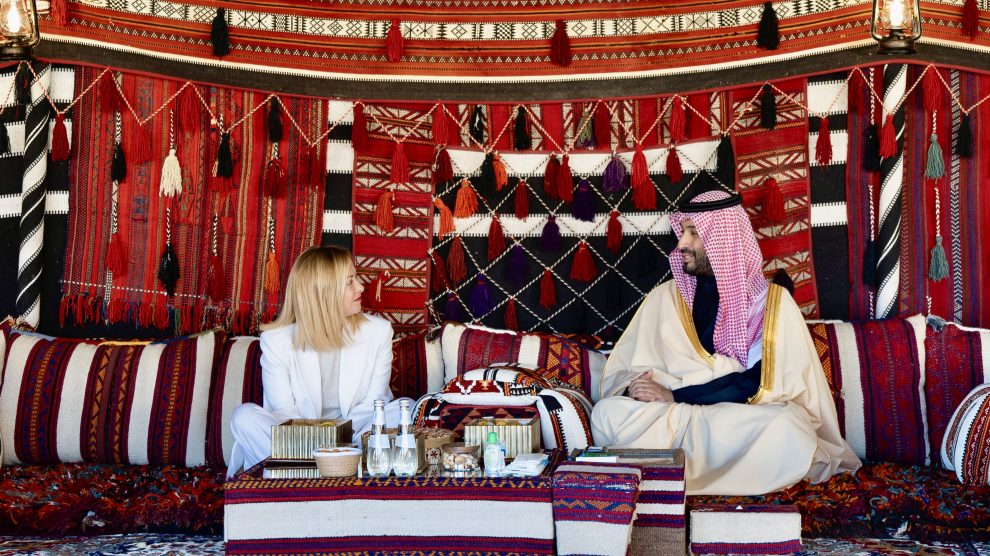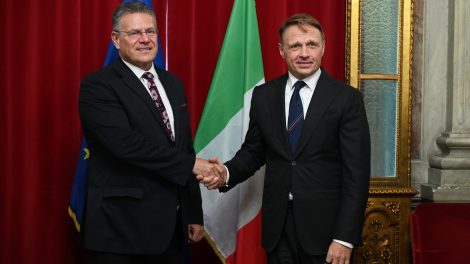Decoding the news. Italy’s growing alignment with Saudi Arabia and India isn’t just a diplomatic development—it’s a strategic repositioning. As global dynamics shift toward multipolar competition and value-chain resilience, Rome is seizing the opportunity to anchor itself at the core of a new transcontinental axis.
- This partnership has the potential to transform Italy’s role in the Mediterranean, enhance its industrial footprint in Africa through initiatives like the Mattei Plan, and connect it more deeply to high-growth Asian markets.
Driving the vision. Saudi economic expert and Al Sharq Al Awsat columnist Mosaed Al Zayani sees the Riyadh-Rome-New Delhi triangle as more than a policy coincidence. He calls it a “transformative geo-economic alliance” driven by mutual interests in sustainable development, strategic connectivity, and industrial innovation.
- “What we are witnessing today is the rise of a trilateral relationship between Saudi Arabia, India, and Italy that outlines the contours of a new axis in the global economy,” says Al Zayani. “It merges strategic diplomacy, geo-economic connectivity, and industrial integration.”
Why it matters. Each of the three countries brings unique assets to the table:
- Saudi Arabia is reinventing its economy under Vision 2030, moving from oil dependency to clean tech, innovation, and advanced logistics.
- India offers technological capacity, market scale, and digital infrastructure as the world’s fifth-largest economy.
- Italy contributes deep expertise in energy transition, high-efficiency design, and smart manufacturing—and stands to benefit geopolitically as the EU’s natural link to the Mediterranean and the Global South.
- “Italy brings advanced industrial know-how,” Al Zayani notes. “Its role is not peripheral—it’s central to the connectivity we build.”
Zoom in: IMEC. The India-Middle East-Europe Economic Corridor (IMEC) is already emerging as the flagship project of this trilateral synergy. It’s designed to reshape the flow of goods, energy, and data across continents, reducing dependency on traditional chokepoints and reinforcing resilience in global supply chains.
- “IMEC offers a strategic alternative to traditional trade routes,” says Al Zayani. “It enhances physical and digital connectivity via ports, railways, energy infrastructure, and undersea cables.
- Saudi Arabia acts as a regional logistics hub, India drives toward Western markets, and Italy emerges as a critical Mediterranean anchor.”
Beyond infrastructure. The triangle is not just a logistical play. Al Zayani sees it as the embryo of a new model of interregional cooperation grounded in shared priorities such as energy security, digital transformation, and sustainable industrial development.
- It could serve as a template for future multilateral frameworks — including outreach to African markets.
- “This isn’t just trilateral cooperation,” he says. “It’s the beginning of a multidimensional strategic axis that could rebalance global economic dynamics and provide a new framework for interregional development.”
What we’re watching. As systemic competition intensifies and traditional alliances are reassessed, the Riyadh–Rome–New Delhi alignment could emerge as a new geo-economic gravity centre.
- The Saudi-Italian Business Council meetings in Milan and Turin underscore this momentum.





